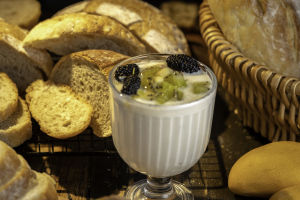The enduring combination of rice and beans holds significant nutritional value at an affordable price. A cup of this simple dish offers 12 grams of complete protein, 10 grams of fiber, and essential vitamins and minerals like B-6, vitamin E, phosphorus, calcium, magnesium, and potassium.
While the domestication of rice and beans traces back to ancient China, Peru, and Mexico, Latin and African cultures have long embraced this pairing, leading to the development of regional dishes that represent the culinary heritage of various countries.
The Culinary Diversity
From arroz con gandules in Puerto Rico to red beans and rice in Louisiana, the flavors and traditions associated with rice and beans vary across regions. Whether preparing with short, medium, or long grain rice, and pinto, black, or kidney beans, the choice of seasonings can elevate the gastronomic experience of rice and bean preparations.
The Cost-Effective Meal
Affordability of Ingredients
Rice and beans stand out as a cost-effective source of protein, with the average cost per one-cup serving being just 49 cents. Dried beans, priced at $1.99 per pound, offer 16 half-cup servings, while canned beans, though slightly more expensive, provide convenient options.
Similarly, rice offers economic value, with long grain varieties commonly used in these dishes.
The Nutritional Benefits
Nutritional Value of Rice and Beans
The combination of rice and beans provides all nine essential amino acids, forming a complete protein source. While both brown and white rice play their roles, whole grain rice offers antioxidants and essential nutrients like B vitamins, calcium, and iron.
Opting for long grain rice enhances the texture and overall quality of rice and bean dishes, compared to short or medium grain varieties suitable for specific cuisines.
Canned vs. Dried Beans
Both canned and dried beans are rich in nutrients, but considerations like prep time and salt content come into play. Canned beans, while convenient, may contain higher salt levels and potentially harmful chemicals like BPA in the can liners. Rinsing canned beans or choosing no-salt and BPA-free varieties can help reduce the sodium content and minimize health risks associated with certain canned beans.
Cooking Tips
Quick Soaking Method for Dried Beans
For those pressed for time, a quick soaking technique can enhance the flavor of dried beans. By bringing beans to a boil, then letting them sit in the hot water for an hour, the soaking process can expedite cooking and improve the overall taste of the dish.
Enhancing Rice Flavor
Infusing aromatics like fresh herbs or dried spices into the cooking process can elevate the taste of rice, which tends to be plain on its own. Adding herbs like rosemary, thyme, or spices such as bay leaves before cooking the rice can result in a more flavorful and aromatic dish, enhancing the overall dining experience.


